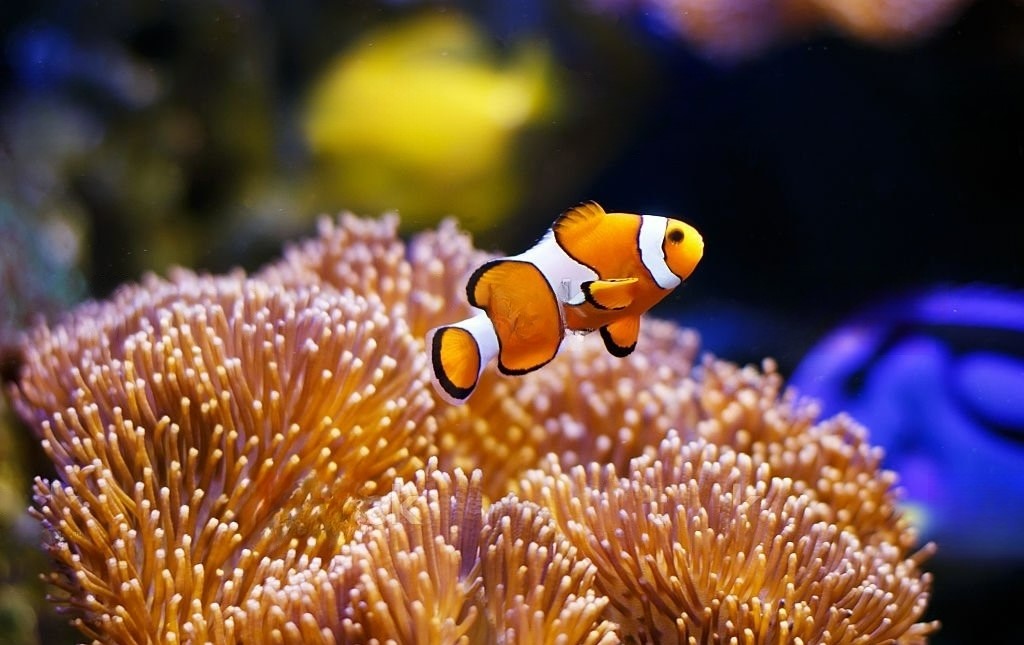
Illuminating the Beauty of Your Aquarium
Light is the lifeblood of all living organisms, and aquarium plants are no exception. Aquarium lighting simulates natural sunlight and promotes healthy plant growth by supplying the light energy that plants need for photosynthesis.
Fish also require daylight to darken their pigment and reach their full-color potential. It’s important for fish and plants to have a consistent day and night cycle so they can rest.
Lighting Colors
A well-lit aquarium shows off the beauty of its fish, plants, and decorations. Choosing the right lighting color is an important step in creating a thriving ecosystem that fits your aesthetic. When shopping for a new light for your tank, you will come across terms like “hue,” “spectrum” and “Kelvin rating.”
All aquarium lights produce different wavelengths of light which reflect off objects. The brighter the light, the more vibrant the reflected colors become. Aquarium lights that produce a warmer color spectrum such as 6,500K to 8,000K tend to highlight colors like oranges, browns, and greens. These types of lights work great with most freshwater fish and help bring out their natural colors. Blues will also show up with this type of lighting but will be less prominent than under a brighter light such as a 10,000K spectrum.
Some fish live in open water rivers, lakes, and streams where the light is bright throughout the day. They need bright lighting to see their surroundings and for safety reasons. Other fish prefer dimmer habitats under fallen logs or overhanging vegetation and thrive with dimmer light.
LED (Light Emitting Diode) lights are a popular choice for aquariums because they are energy efficient and long-lasting. You can find many different LED bulbs that produce different colors and intensities of light. Some can even be dimmed to control the amount of light being put out.
The Hygger Aqua LED has an impressive number of settings that allow you to create a natural day/night cycle for your tank. You can adjust the white and blue lighting to help encourage healthy coral growth. It also comes with an easy-to-use mode that illuminates the tank in blue light to bring out the fluorescence of tetras, bettas, and other tropical fish.
The Phlizon Full-Spectrum Aquarium LED has a few fewer settings but still provides an excellent combination of blue and white lighting for coral tanks. You can tone down the blue for nocturnal viewing of your crypts or add more white to watch your firefish and flame angels shimmer in their glory.
Dimming
While aquarium lighting can be used for aesthetic purposes, it also has a practical purpose: to provide illumination for fish and aquatic plants while imitating natural daylight cycles. Too much light can result in the overgrowth of algae, which increases tank maintenance and can be hazardous for fish and plants. Dimming the lights can deprive algae of light energy, which can help prevent overgrowth and encourage a healthy, balanced environment.
While there are different types of aquarium lighting, LEDs are a good choice because they provide more control over the color and intensity of the light. For example, some LEDs can be programmed to emit pink, blue, warm white, and pure white, which is helpful in creating a specific lighting habitat for your aquarium. Others come with pre-set lighting settings, such as Lake Malawi, tropical river and planted.
When shopping for a LED aquarium light, be sure to consider the Kelvin rating, which is the temperature at which a lamp produces its light. A higher Kelvin rating means a cooler color, while a lower rating indicates a warmer color.
The NICREW SkyLED Plus Planted Aquarium Light features 6,500K white LEDs to simulate sunlight for a more natural look in your aquarium. It also has 450nm blue LEDs for moon glow effects and 660nm red LEDs that generate light in the wavelength plants use to photosynthesize. This combination makes it easier to keep most types of live plants in the aquarium, including high-intensity needing plants like Java moss and Anubias Nana.
Another important consideration when purchasing an aquarium light is its brightness and wattage. Brighter lights can cause algae overgrowth because they heat the water, which stimulates algae growth. Be sure to consider the size of your aquarium when determining how bright your light should be.
Be sure to consider your budget when selecting an aquarium light. Some brands offer more affordable options than others, but you should also consider the quality of the light and any additional features that may be included in the purchase price. You can often find reviews and testimonials of previous customers online that can help you make a more informed decision.
Remote Controls
If you’re looking to add a bit of ambiance to your aquarium, there are many options to consider. You can use LED lights to create a beautiful underwater scene, or you can try something more subtle, like a simple light-up sea anemone that sways with the movement of the water, creating a realistic display of movement.
The best aquarium lighting will improve the appearance of your fish tank, while also making it healthier for your pets and aquatic plants. Some of the features to look for in a good aquarium lighting include:
LED aquarium lights are available in a wide range of colors, and some even come with built-in filters that help to keep the water clean. You can also find some that have a timer to turn the lights off and on automatically throughout the day, or that have a motion sensor that can be activated when someone enters the room.
A high-quality aquarium LED lighting system is a great way to enhance the beauty of your fish tank, and it can also be used as a nightlight for the pets and plants in your home. You can choose from a range of different colors, and some are available with a remote control that lets you adjust the brightness and color.
The Burqa Basic Kit 2-in-1 offers a light and digital heater for your aquarium, and it has 3 lighting modes, including white, red, and blue. It also has a clear display and a heating indicator, and it is suitable for tanks up to 2 feet. The light is IP68 waterproof, and it can work submerged or out of the water.
The Marineland Color Changing LED POD with Remote allows you to customize the underwater environment of your tank with different effects, including sunrise, sunset, lightning, and clouds. One remote controls multiple color-changing pods, and it includes memory buttons and auto-play for easy use. The light is water-resistant, and the included suction cups make it easy to install. It’s also energy-efficient, so it will save you money on your electricity bill.
Timer
The aquarium light timer allows you to set the day and night cycle of your lights for optimum performance. This can be especially useful in a reef tank that requires more intense lighting and longer hours than most plants. The timer will ensure that your lights are on for the desired amount of time and will turn off automatically.
You will also have the ability to control the brightness of your lights. Some lighting manufacturers will offer a variety of white-tone options. You can choose between a warmer, a cooler, or an even more neutral white shade. These colors will change the color temperature of the light, which is measured in Kelvin. The color temperature is an important factor when it comes to determining the intensity of the light, as different types of plants require different intensities in order to thrive.
Another advantage of the timer is that you will be able to set the duration of each cycle for your aquarium light. This can be particularly helpful if you are going away for a long period of time and need to be sure that the light will shut off on its own. The timer can also help you to avoid over-saturating your plants with light, which can lead to algae growth.
When choosing the timer for your aquarium, make sure that it is compatible with the light you have purchased. This will ensure that you are getting the most bang for your buck and that you will be able to use all of the features available. Many of these timers are made to work with specific LED lights and will not be able to be used with other manufacturers’ products.
You may also want to consider the cost of the timer when making your decision. The price of the timer will vary depending on the manufacturer and the type of light that you are using in your aquarium. You should compare prices from a number of different retailers in order to find the best deal. You should also be sure to factor in any additional costs, such as the cost of shipping or installation.
